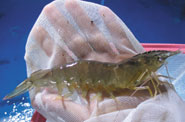 Introduced
species in fisheries and aquaculture Introduced
species in fisheries and aquaculture |

|
| About | DIAS | Impacts | Regulations and agreements | What can be done| Terminology| Library |
| Regulations |
|
| The following documents are directly related to introductions
of alien species in aquatic systems. Convention on Biological Diversity The Convention establishes three main goals: the conservation of biological diversity, the sustainable use of its components, and the fair and equitable sharing of the benefits from the use of genetic resources.Read more •CBD Cartagena protocol on biosafety to the convention on biological diversity The Protocol seeks to protect biological diversity from the potential risks posed by living modified organisms resulting from modern biotechnology.Read more •Cartagena protocol on biosafety Global Invasive Species Programme (GISP) The GISP mission is to conserve biodiversity and sustain human livelihoods by minimizing the spread and impact of invasive alien species.Read more •GISP Convention on Wetlands of International Importance especially as Waterfowl Habitat (Ramsar Convention) The Convention on Wetlands, signed in Ramsar, Iran, in 1971, is an intergovernmental treaty which provides the framework for national action and international cooperation for the conservation and wise use of wetlands and their resources.Read more •Ramsar Convention Code of Conduct for Responsible Fisheries This Code sets out principles and international standards of behaviour for responsible practices with a view to ensuring the effective conservation, management and development of living aquatic resources, with due respect for the ecosystem and biodiversity.Read more •Read more Precautionary approach to capture fisheries and species introduction The document proposes a definition of the precautionary approach to fisheries as well as an elaboration on the burden of proof. Guidelines are provided on species introduction, voluntary or accidental (including through ballast water and sediment discharge), recognizing the difficulty of ensuring a precautionary approach in relation to that issue.Read more •Precautionary approach ICES code of practice on the introductions and transfers of marine organisms The ICES Code of Practice sets forth recommended procedures and practices to diminish the risks of detrimental effects from the intentional introduction and transfer of marine (including brackish water) organisms.Read more •ICES code of practice Asia regional technical guidelines on health management for the responsible movement of live aquatic animals and the Beijing consensus and implementation strategy The Asia Regional Technical Guidelines on Health Management for the Responsible Movement of Live Aquatic Animals and their associated implementation plan, the Beijing Consensus and Implementation Strategy (BCIS), provide expert guidance for national and regional efforts in reducing the risks of disease due to trans-boundary movement of live aquatic animals. Read more •BCIS  White leg shrimp P. vannamei is being widely introduced into Asia.
Full story
White leg shrimp P. vannamei is being widely introduced into Asia.
Full story |
| © FAO / FIRI, 2006 | |